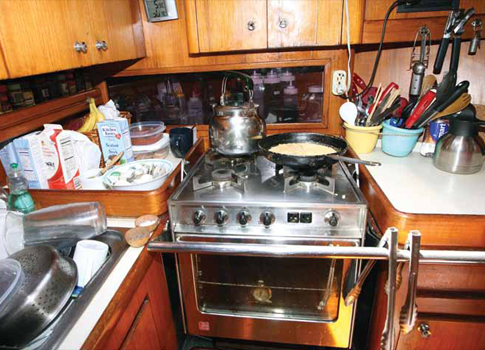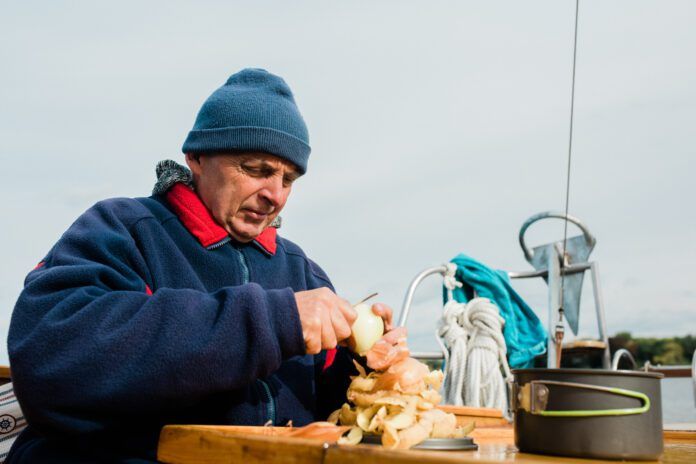Historically, the cook has always enjoyed a privileged position on board a boat. And no wonder, since the cook almost always works the hardest, whether the boat is underway or at anchor. While the navigator and helmsman’s job is no less critical, the nerve-wracking labor of maintaining a steady course and plotting an accurate DR position has nearly evaporated in recent years, thanks to GPS, chartplotters, and autopilots. The cook’s job, on the other hand, hasn’t gotten a whole lot easier. So, in honor of the hardest working crew, I’ve put together a list of five items that can help make a cook’s life easier underway. I’d be interested in hearing what other suggestions our readers might have.

- Deep, double sink. Having a secure place to keep casseroles, dirty dishes, or a thermos that needs filling can make life a whole lot easier. Two deep (at least 10-inch) sinks that self-drain on anyangle of heel lets you always have a reserve as a catch all, or a rinse station when doing dishes.
- Foot-operated water pump. Electric pumps are great, but they can waste water, and they have more moving parts to break. A foot-operated manual pump not only gives you a backup, but it acts as an automatic water conservation device. I like to have two on board, one for fresh water, one for salt, allowing you to use salt water for wash cycle, hand washing, etc. Here’s an article on installing my choice for the job, the Whale Gusher Galley Foot Pump, now in its third iteration.
- Pressure cooker. It cooks fast and keeps stuff from spilling. The trick is to find one that can stand up to the marine environment. We tested several models in December 2010.
- Easy cleaning pots and pans that fit the stove you’re cooking on. We tested nesting cook kits in April 2009. Whatever set you settle on, make sure your favorite sea pots will fit securely in your stove’s potholders. Subscribers can see our most recent test of galley stoves, which rated the Force 10 as a favorite.
- Positive-latching cupboards. There are about as many ways to latch a cupboard as there are ways that they can fail, letting their contents spill across the cabin floor. Latches are often a matter of aesthetics. Most boats have a variation of a push-button release and elbow catch, or a toggle catch. The pushbuttons can open unexpectedly when you lean against them in a seaway. The elbow catches often require you to insert your finger into a hole (always exciting for the chef in a seaway). The toggle catch remains my favorite. Just turn the handle to lock or unlock the cupboard door. Dead simple, and by shimming the catch you can keep the doors from rattling.
If you’re interested in a professional view on galley details and ergonomics, be sure to read our article on galley design based on input from some professional on-board chefs. If you’re thinking about buying a gift for the ship’s chef, our March 2017 issue highlights some indispensible stainless steel gadgets for the galley. And if you really want to dig into the art and science of making healthy meals at sea, our three-volume ebook “The Comprehensive Guide to the Galley and Onboard Cooking,” is now available for download in our online bookstore.*
This article was published March 1, 2017 and has been updated.
*All ebooks sales help support future PS testing.









































